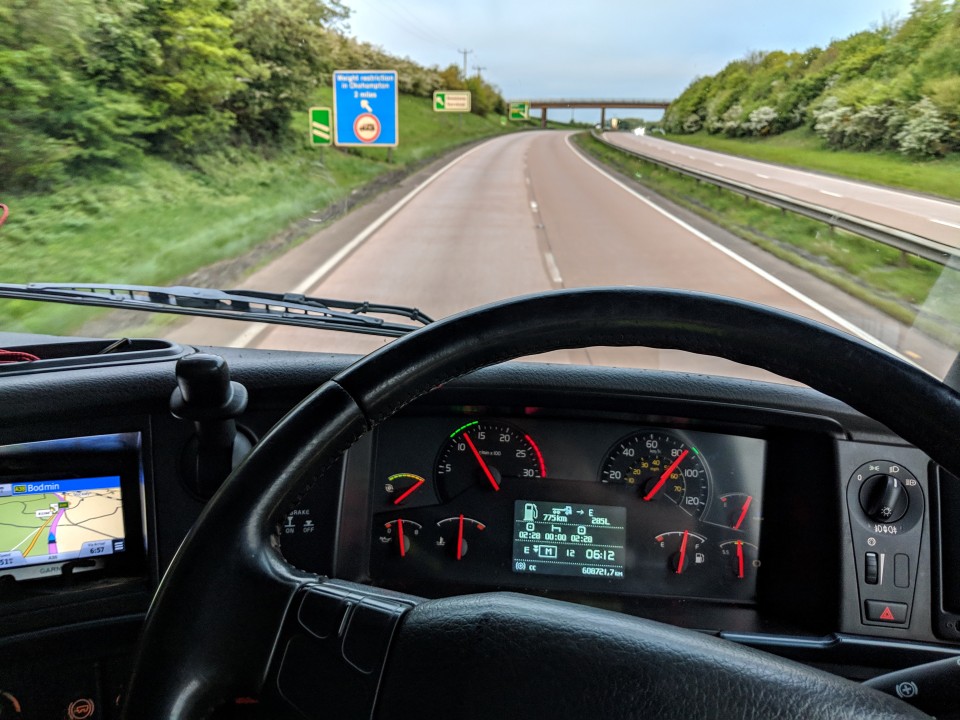
Susie Jones
Правила использования тахографа - это просто
Создано: 01.08.2024
•
Обновлено: 08.08.2024
Мир правил использования тахографов может запутать даже самого опытного водителя грузовика. Не говоря уже о тех, кто только начинает работать в этой отрасли. Мы стремимся рассеять эту путаницу.
Что такое тахограф и зачем он нужен?
Согласно словарю, тахограф - это "устройство, устанавливаемое в транспортные средства, такие как грузовые и междугородние автобусы, для записи информации, например, о скорости движения, расстоянии и количестве перерывов, которые делает водитель".
Цель тахографа - предотвратить усталость водителя и обеспечить соблюдение правил водителями и работодателями. По данным благотворительной организации Brake, "четыре из десяти аварий, связанных с усталостью, происходят с участием водителей коммерческих автомобилей". Поэтому правила использования тахографов играют важную роль в снижении этого числа.
Когда вам нужен тахограф?
Вам необходимо установить тахограф, если полная масса вашего автомобиля превышает три с половиной тонны. Важно помнить, что это касается и буксировки прицепа. Из этого правила есть несколько исключений:
Если вы ездите только по дорогам общего пользования
Если автомобиль управляется вооруженными силами, полицией или пожарной командой
Если вы являетесь коммерческим автопарком и используете транспортные средства с максимальной массой семь с половиной тонн, а расстояние до вашей операционной базы составляет менее 100 км.
Если вы перевозите груз, а ваш автомобиль работает на электричестве
Если вы перевозите оборудование или технику для использования водителем, и управление этим транспортным средством не является вашей основной работой.
Каковы различные типы тахографов?
Существует три различных типа тахографов:
Аналоговые: В Европе они стали обязательными в 1986 году. Аналоговые тахографы используют листы вощеной бумаги для записи данных водителя. Водители вручную вводят данные и вставляют их в устройство тахографа.
Цифровые: Появились в 2006 году. Их используют более миллиона транспортных компаний и более шести миллионов профессиональных водителей. Цифровые тахографы записывают данные водителя на внутреннее запоминающее устройство и карту водителя.
Умный: С июня 2019 года Европейский союз обязывает компании использовать интеллектуальные тахографы. Они автоматически фиксируют местоположение автомобиля в начале и в конце каждой поездки. Кроме того, они предоставляют обновленную информацию каждые три часа
Что означает каждый символ тахографа?
Посмотрите наше видео с объяснением каждого символа тахографа.
Правила перерыва
Для безопасности водителя грузовика и всех остальных участников дорожного движения необходимо соблюдать правила дорожного движения. Мы привели основные пункты.
Время вождения:
- Не более четырех с половиной часов до перерыва
Перерывы:
- Должны составлять не менее 45 минут, если водитель не использует время для отдыха
Период отдыха:
- Во время отдыха нельзя управлять автомобилем или выполнять любую другую работу
Разделение перерывов:
Полный 45-минутный перерыв можно разделить на 15-минутный и 30-минутный.
Перерывы должны быть распределены между четырьмя с половиной часами вождения
По правилам ЕС, если перерывы разделены, второй перерыв должен составлять не менее 30 минут.

Суточный лимит вождения
Суточный лимит вождения означает максимальное время вождения в течение дня. Максимум составляет девять часов, но его можно увеличить до 10. Однако это можно делать не более двух раз за неделю. Суточное время вождения можно определить как:
Общее накопленное время вождения между окончанием ежедневного периода отдыха и началом следующего ежедневного периода отдыха
Общее накопленное время вождения между ежедневным периодом отдыха и еженедельным периодом отдыха. .
Недельный и двухнедельный лимит вождения
Водителям необходимо следить за тем, чтобы не превышать максимальный недельный и двухнедельный лимит вождения.
Максимальный недельный лимит вождения составляет 56 часов (относится к фиксированной неделе)
Неделя начинается в 00.00 и заканчивается в 24.00 следующего воскресенья.
Двухнедельный лимит вождения составляет 90 часов.
Ежедневный отдых
Кроме того, необходимо ежедневно отдыхать.
Водитель должен отдыхать 11 часов подряд. Это время может быть сокращено до девяти
Такое сокращение может происходить не более трех раз между недельными периодами отдыха
Период отдыха должен быть завершен в течение 24 часов после окончания последнего ежедневного или еженедельного периода отдыха.
Ежедневный отдых можно проводить в автомобиле, но для этого необходимы подходящие спальные места. Если их нет, водитель должен найти ночлег. Узнайте на странице locations, какие стоянки грузовиков предлагают такую услугу.
Еженедельный отдых
Еженедельный отдых должен быть предоставлен не позднее, чем по истечении шести последовательных 24-часовых периодов с момента окончания последнего еженедельного отдыха.
Водители обязаны отдыхать не менее 45 часов
Они могут взять сокращенный еженедельный отдых продолжительностью не менее 24 часов
Сокращенный еженедельный отдых должен быть компенсирован одним блоком, и не менее чем за девять часов до конца третьей недели.
Несмотря на то, что сокращенный отдых может быть использован, стоит отметить, что в двух неделях подряд, когда был использован сокращенный отдых, продолжительность одной из них должна составлять 45 часов.

Многоместный экипаж
Некоторые водители могут взять на работу другого водителя. Преимущества такого подхода заключаются в повышении производительности, увеличении пробега и продолжительности поездки.
Оба водителя должны ежедневно отдыхать по девять часов
Этот ежедневный отдых должен осуществляться в течение 30, а не 24 часов.
Первый час мультиманипуляции не требует присутствия другого водителя. По истечении часа он становится обязательным.
Паромная переправа или поездка на поезде.
Как уже говорилось выше, регулярный ежедневный отдых водителя должен составлять 11 непрерывных часов, однако из этого правила есть несколько исключений. При условии, что автомобиль сопровождает водитель, ежедневный отдых может прерываться дважды, но в общей сложности не должен превышать одного часа. Например, посадка и высадка на паромы и поезда.
Если обычный ежедневный период отдыха прерывается таким образом, то накопленный период отдыха должен составлять не менее 11 часов или 12, если он разделен.
Что такое правило одной минуты для тахографа?
Правило одной минуты вступило в силу в октябре 2011 года. Оно относится к старому законодательству, согласно которому минута, в течение которой водитель находится за рулем не менее пяти секунд, должна регистрироваться как время движения. Однако Евросоюз изменил это законодательство, и теперь в протокол заносится только одно самое продолжительное непрерывное действие в течение минуты.
Что произойдет, если я не буду соблюдать правила использования тахографа?
Несоблюдение правил использования тахографа может привести к штрафу, а иногда и к тюремному заключению. Как правило, наказание зависит от тяжести нарушения. Большинство нарушений правил использования тахографа карается фиксированными штрафами. У водителей есть до 28 дней, чтобы рассмотреть вопрос о фиксированных штрафах.
В Великобритании существует два вида штрафов и наказаний.
Штраф четвертого уровня: максимальный размер штрафа составляет 2 500 фунтов стерлингов; этот предел установлен для каждого тахо-штрафа. Однако в случаях с несколькими нарушениями четвертого уровня максимальный штраф может быть наложен за каждое нарушение.
Штраф пятого уровня: его размер не превышает 5 000 фунтов стерлингов, однако, как и в случае со штрафами четвертого уровня, в случаях с многочисленными нарушениями штраф может быть максимальным.
Правила тахографа могут быть сложными для понимания. Однако их несоблюдение может привести к проблемам с безопасностью и потенциальным штрафам. Понимание и соблюдение правил позволит автопаркам и водителям безопасно и легально эксплуатировать свои транспортные средства. Важно отметить, что правила и нормы использования тахографов могут различаться в зависимости от страны.



